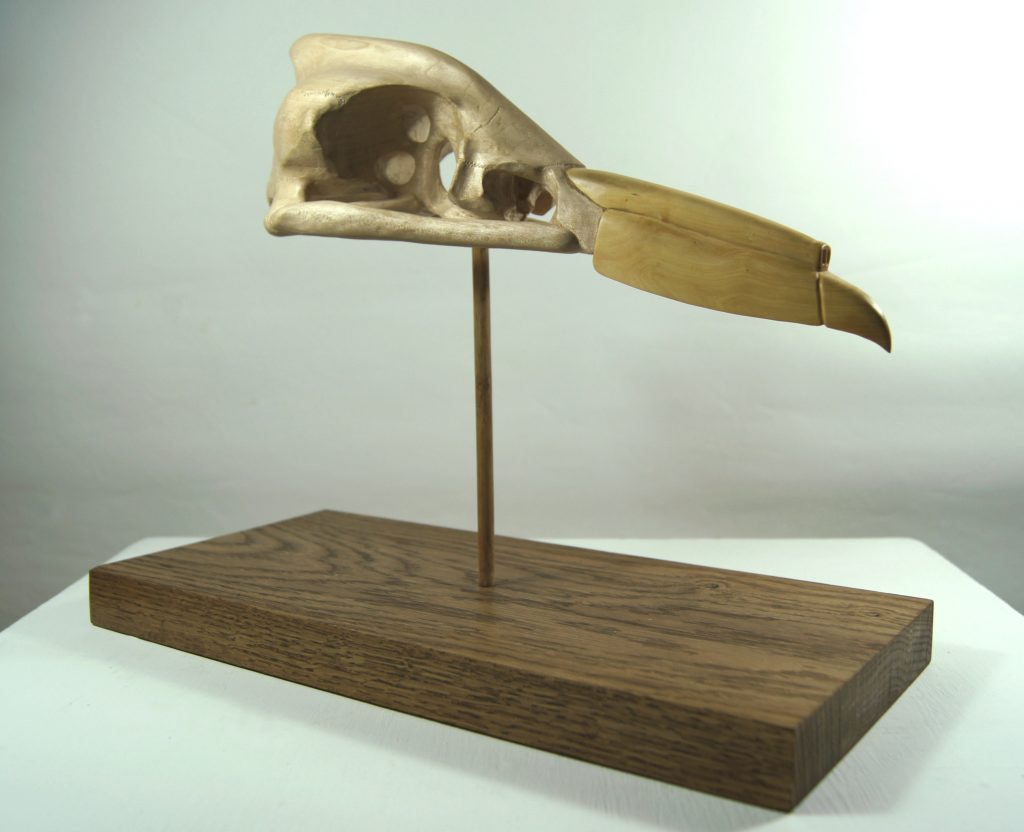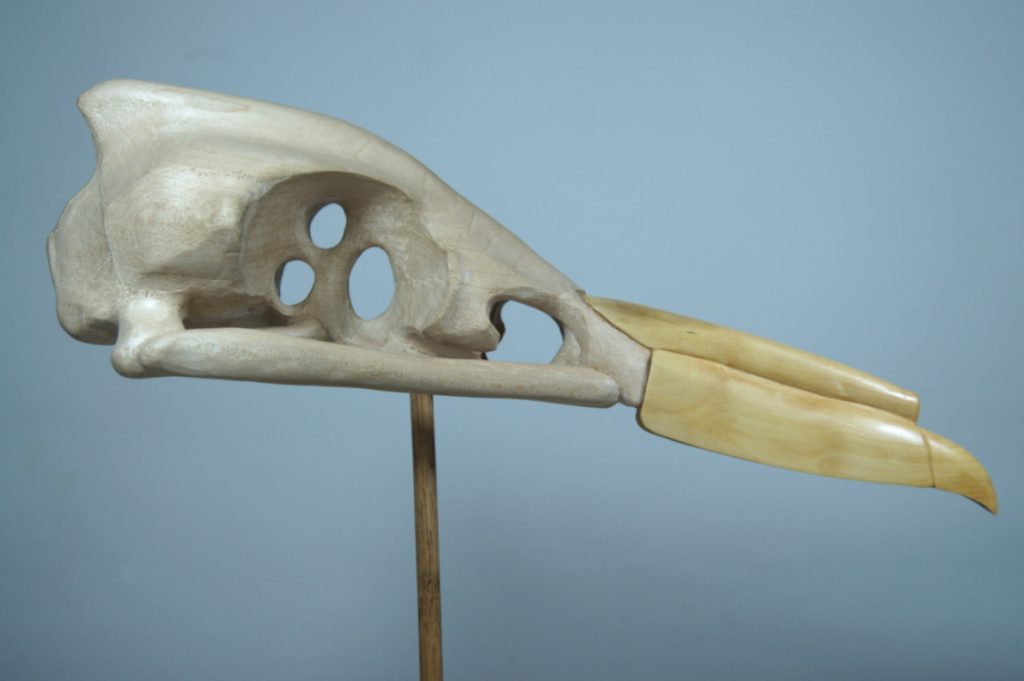
After making a few of the ‘Metainsecta’ insects, I began to wonder what kind of creatures would evolve to eat such dangerous prey. There would certainly be predators on these strange beasts: what would they look like?
In 2011, with an anatomy-themed exhibition coming up, the ideal opportunity arose to research skulls and then carve one belonging to such an animal. Using sycamore for the skull and boxwood for the beak, this was the result.
The predator bird’s skull is about 25cm (10″) long. I imagine such a bird being flightless but a strong runner. The beak is sturdy and has a nozzle, from which a sticky mucus could be fired to incapacitate more dangerous prey. This is loosely based on a seabird called a fulmar, which has a gland above its nose that secretes excess salt.

The crest along the top of the skull is based on the sagittal crest found in many mammals and reptiles. This gives an attachment point for powerful jaw muscles. Birds, which have light skeletons adapted to fly, don’t generally have these heavy, bony crests but perhaps a flightless bird could have one. Cassowaries (large, flightless birds living in Australia and Papua New Guinea) do have bony crests called ‘casques’, although they serve a different function.
The predator bird would be a fearsome creature indeed!